- Home
- Jane Smiley
The Man Who Invented the Computer Page 2
The Man Who Invented the Computer Read online
Page 2
In 1913, when he was not quite ten, John helped his father wire their home for electricity (subsequently, they wired the homes of some of their neighbors, too). In 1914, John mastered the owner’s manual of his father’s new Ford Model T, and at eleven he was driving it. John read his mother’s books, including Ruskin and Spenser, and he read his father’s books—including a manual on radiotelephony (wireless sound transmission). When his father ordered an up-to-date slide rule, then decided that he didn’t really need it, John mastered it within a couple of weeks and thereupon became, in his own mind, a nascent mathematician. He found his father’s old college algebra textbook and began to work his way through it. What he could not understand (differential calculus, infinite series, logarithms) Iva explained to him. During this period, he learned about various number systems other than the decimal system—this unusual familiarity with nondecimal ways of counting and calculating and his practice using them was what would eventually distinguish his ideas about calculators from those of his contemporaries.
John liked to make things and to demonstrate his skills—in sixth grade, because some older girls who had already finished elementary school were gathering in the back of the classroom and crocheting, he learned to crochet. He pursued his project at school, no longer undaunted by teasing but stimulated by it—he flaunted his work and bragged about his skills until the teacher banned crocheting at school. He soon learned to sew. In fact, John Vincent Atanasoff seemed to see every new idea or object as an opportunity to explore and master whatever his world had to offer. Atanasoff’s parents gave him plenty of freedom, encouraged his enterprise, and helped him pursue what he wanted to master. They also made a stable life for him in an out-of-the-way spot where there was plenty to do and plenty of space to do it in.
The Atanasoffs’ life in Brewster was not untroubled—the Atanasoff family, with its strange name and alien ways, was sometimes harassed and their property vandalized. John Atanasoff encountered resentment at work. The larger culture seethed with prejudice and vigilantism. A local Catholic lawyer was run out of the area. Between 1909, when the Atanasoffs arrived in Brewster, and 1920, more than fifty black people were lynched in Florida—Atanasoff himself remembered witnessing a lynching as a teenager, in Mulberry (about eleven miles north of Brewster), though that one is not attested to in Ralph Ginzburg’s 100 Years of Lynchings.
In 1912, John and Iva purchased a 155-acre farm southwest of Brewster, which included a 30-acre orange grove and 120 acres of timber. For young John, the farm meant more scope for exploration and, in particular, endless chances to not only repair the machinery used on the farm, but to take it apart and improve its design. The boy became interested in farming itself—he subscribed to Wallaces’ Farmer (the publication founded in Iowa by the grandfather of Vice President Henry A. Wallace) and tried the latest farming techniques. Since John Atanasoff worked full time, young John became the one who organized and ran the farm. In the meantime, he graduated from the high school in Mulberry, completing his coursework in two years, at fifteen. The teachers at the high school did not attempt to control Atanasoff’s independence or restrict his education—they encouraged his curiosity and his enterprise. Once he had graduated, Atanasoff got himself certified to teach math classes and saved the money he earned toward his college education, which he already knew would be in math and science. He worked for a year as a phosphate prospector and entered the University of Florida in 1921, just before his eighteenth birthday.
The University of Florida is and was a land-grant university. The Morrill Act of 1862, under which both the University of Florida and Iowa State College were founded, was written for a specific educational purpose: “to teach such branches of learning as are related to agriculture and the mechanic arts, in such manner as the legislatures of the States may respectively prescribe, in order to promote the liberal and practical education of the industrial classes in the several pursuits and professions in life.” In other words, the land-grant colleges were intended to focus on the useful. In what is perhaps the paradigm of public higher education, the three state-funded colleges in Iowa are an example of this idea of the distinct (and class-based) purposes of higher education: postgraduate degrees are offered by the medical school, the art school, the music school, the graduate school, the law school, and the business school at the University of Iowa. Postgraduate degrees in engineering, agriculture, veterinary medicine, design, and industrial engineering are offered at Iowa State (though these categories have gotten somewhat less distinct in the last twenty-five years). The third state-funded school was, until 1961, Iowa State Teachers College, a normal school. Although the system of higher education was not as distinct in every state as it was in Iowa (the University of Wisconsin and the University of Minnesota have all types of programs on the same campus), the land-grant colleges retained their focus on disciplines applicable to the health and wealth of the individual states. The Morrill Act promised to fund these colleges by granting each state thirty thousand acres of federal land, the proceeds of which would go to the colleges. The land did not have to be inside the state—New York State was granted land in Wisconsin, for example.
The Morrill Act did not originally cover Florida, because the Confederate states had seceded from the Union before the passage of the act, but the act was extended in 1890 to the former Confederate states. Most of these states used money from the act to fund the useful arts at the main campus and to fund the establishment of separate, segregated black colleges. In 1905, Florida Agricultural College, in Lake City, was moved fifty miles south to Gainesville and renamed the University of the State of Florida. At the time of John Vincent Atanasoff’s matriculation, the university was all male and all white—women students went to Florida Female College, in Tallahassee, and black students of both sexes went to Florida Agricultural and Mechanical College for Negroes, also in Tallahassee. Related to the Morrill Acts of 1862 and 1890 was the Hatch Act of 1887, which funded (also through land grants) the establishment of agricultural experiment stations in each of the states. These stations were normally attached to the land-grant colleges, broadening their practical mandate.
By the time he began college, Atanasoff knew he wanted to study physics and to be a physicist. He was familiar with and excited by Einstein’s theories and by the other work being done in the field, but no physics major was offered at the university, so he went into electrical engineering, the most theoretical scientific major offered. In Gainesville, Atanasoff was surrounded by opportunities to think, but also opportunities to do. Requirements of the electrical engineering major included building models and projects, so Atanasoff took classes in machine shop, forge and foundry, and electrical mechanics. He also pursued his earlier interest in radio communication. He tutored students for money and worked summers—one summer in Jacksonville, he found a lucrative job surveying the city streets. He was, in short, brilliant, eager, enterprising, highly directed, and hardworking. Just as John Atanasoff’s life had been almost a paradigm of the classic immigrant story, John Vincent Atanasoff’s life was almost a paradigm of the classic ambitious American tale—a Tom Sawyer–like boyhood followed by a Horatio Alger–style self-funded and successful career.
But the elder Atanasoff’s life remained difficult—while John Vincent was away in Gainesville, John and Iva decided to sell the farm and move to Bradley Junction, a town between Brewster and Mulberry. One night when John was coming home, he was attacked by a mob clad in white robes and nearly killed. He was saved by the wife of the Cyanamid plant manager, who heard the ruckus and ran outside with a shotgun. The mob was revealed to be made up, in part, of neighbors whose children Iva tutored in math and, in part, men who worked for John at the plant, all apparently motivated by the strangeness of John’s name and origins. The attackers broke John’s leg and ribs, and there were so many internal injuries that John was bedridden for weeks; John Vincent had to return from college to help take care of him. Although the attack was foiled, the younger Atanasoff children s
uffered for years from the xenophobia, and probably the envy, of the local population.
Atanasoff’s childhood and adolescence constitute a case history of creativity—of the sometimes overlapping psychological characteristics of creative people enumerated in R. Keith Sawyer’s Explaining Creativity. According to family anecdotes, the young Atanasoff seems to have exhibited every trait Sawyer cites, from self-confidence, independence, high energy, and willingness to take risks, to above-average intelligence, openness to experience, and preference for complexity. In the crocheting, we even see what Sawyer calls “balanced personality”—that is, a willingness to do things that are considered the province of the opposite sex. The key component of a creative mind that Atanasoff consistently showed as a child and a young man is what Sawyer calls “problem finding”—that is, the ability to productively formulate a problem so that the terms of the problem lead to a solution. Young Atanasoff’s pleasures on the family farm seem precisely those of “problem solving” evolving into “problem finding.” When a fence required fixing or a machine broke down or work needed organizing, he didn’t figure out how to return things to their original configuration—rather, his goal was to understand how the original operated and then to streamline and improve those operations, as when he took apart and repaired farm machinery, or when he tried new cropping ideas without consulting his parents, or when he organized his siblings’ chores, not forgetting to include a lesson or two for them in biology or mechanics.
In 1925, when Atanasoff graduated from the University of Florida, he had the highest grade average ever recorded up to that point at the university. He applied to master’s programs in physics, his true love; the first to respond with offers of admission and aid was Iowa State. Atanasoff accepted the offer and made his plans to go to Ames. Sometime later, he received an offer from Harvard, but he turned it down. He was to remain in the land-grant system, and his tenure there was to profoundly shape his career.
Iowa Agricultural College was founded in Ames in 1856, ten years after Iowa statehood. Ames lies at the southern end of a geological feature known as the Des Moines Lobe, deposited by the Wisconsin ice sheet when the glaciers retreated ten to fifteen thousand years ago. The landscape is open, frequently marshy, and pockmarked by small lakes. For this reason, north-central Iowa was somewhat slower to be settled than eastern Iowa; when settlers first entered the Des Moines Lobe region, they found tall-grass prairie that stretched for hundreds of miles. But the land proved exceptionally fertile, and though the climate was marked by winds and weather extremes, Iowans understood very early that farming was the future of the state—the pre–Morrill Act state college included a model farm. In 1862, the Iowa legislature was one of the earliest state legislatures to accept the terms of the Morrill Act. The first undergraduates, a class of twenty-four men and two women, entered in 1869 and graduated in 1872; the Iowa Experiment Station was set up along with the college in the 1860s (by contrast, the Connecticut Agricultural Experiment Station was set up in 1875 and the University Farm of the University of California was not set up until 1905).
By the time Atanasoff arrived in 1921, Iowa State was already famous as the alma mater of Carrie Chapman Catt, a prominent nineteenth-century feminist, and of George Washington Carver, a botanist and inventor, the first black student at the college and the first black researcher at the Experiment Station. An 1893 alumnus, Bert Benjamin, had invented the Farmall tractor, which was the first tractor that could be used to perform all farm operations.
Atanasoff’s stipend for teaching undergraduate math classes at Iowa State for the school year 1925–26 was $800, enough to allow him to find a room on Knapp Street south of campus. The campus was then and is now self-contained but spacious. Although a train ran between the campus and Ames, Atanasoff bought himself a bicycle to get around. At first he did his work and kept to himself—according to his granddaughter, Tammara Burton. “Hurrying toward his destination, he typically wore an expression of severe concentration as he worked to solve the equation that was of greatest interest to him at the moment. With his foreign name, his unfashionable clothes, and his dark unruly hair, he soon earned the nickname around campus of ‘The Mad Russian.’ ” In addition, he spoke in an alien southern drawl as a result of his childhood in Florida. But he impressed his professors, soon gaining a reputation for brilliance. He taught his math students and took his own courses, and these activities were time-consuming. However, Knapp Street was not far from Fraternity Row on Ash Avenue, and it was there, at a mixer for southern students, that he met Lura Meeks, who had come to Iowa State from Cheyenne, Oklahoma, a place at least as wild, in its way, as Florida. Lura was somewhat older than John but still an undergraduate, putting herself through college. Her personality was in many ways the female counterpart to John’s—she had always played the piano, painted, done wood carvings, and written poetry while working on the family farm and doing chores on neighboring farms for cash. At Iowa State, she was on the tennis team and the swimming team, and she was a devoted reader, like Iva. Herself intelligent, energetic, and enterprising, she recognized both John’s talent and his ambition. They were married shortly after he received his master’s degree in physics, in June 1926. Atanasoff then accepted a position at Iowa State for $1,800 per year, teaching mathematics and physics while taking more classes to prepare for his doctoral studies at another land-grant institution, the University of Wisconsin.
Things did not go smoothly in the early months of the marriage. Lura left for Montana, where she had a contract to teach high school, but not wishing to be away from John, she gave up her job and came home in November; John’s contract with Iowa State was not completed in the winter of 1927 until after classes at the University of Wisconsin had already commenced. Money was tight, and Lura got pregnant. John, however, was not much daunted—after he arrived in Madison in the winter of 1927, he began his classwork, knowing that he would soon catch up. The only professor who was offended by this plan was the professor of quantum mechanics, John Hasbrouck Van Vleck. Quantum mechanics is the science that predicts what happens in systems, and in the 1920s it was the most up-to-date and exciting field in physics.
Professor John Hasbrouck Van Vleck was only four and a half years older than his graduate student, but he was from a much different background—his grandfather was an astronomer and his father was a mathematician. He had grown up in Madison and completed his degrees at Harvard at the age of twenty-four. By the time he encountered Atanasoff (and his southern drawl), he had already taught at the University of Minnesota. After the University of Wisconsin, he would return to Harvard. He would eventually win the Nobel Prize in 1977, along with Philip Warren Anderson and Sir Neville Francis Mott (“for their fundamental theoretical investigations of the electronic structure of magnetic and disordered systems”). Though only in his late twenties, Van Vleck already possessed the means to begin a serious art collection. He did not want to allow Atanasoff to enter his class late, and he did not think Atanasoff would be able to do the work. Owing to tight finances, though, John and Lura could not afford to stay an extra semester in order for John to take the course from the beginning. In a replay of his behavior in elementary school, John attended lectures, spoke up in class, asked questions, and, perhaps Van Vleck felt, made himself a pest. At any rate, Van Vleck felt no hesitation about denigrating Atanasoff’s performance and often appended remarks to his answers such as, “If you had been here in the first half of the semester, you wouldn’t have to ask that question.” The course was so difficult that only a few of the students completed it—Atanasoff told Clark Mollenhoff, the Des Moines Register writer who wrote Atanasoff: Forgotten Father of the Computer in the late eighties, “There were perhaps twenty-five graduate students in the class, and … only five even bothered to take the final examination. I wrote for seven hours on that test, and when Dr. Van Vleck called me in later he told me it was one of the best and indicated that it was the best, but made no comment of congratulation.” Van Vleck was not the la
st scientist to fail to appreciate Atanasoff.
Since Atanasoff hoped to specialize in quantum mechanics, Van Vleck was his assigned major professor, but Van Vleck went on leave in 1929–30, so Atanasoff worked under Gregor Wentzel, visiting from Zurich, where he had succeeded Erwin Schrödinger (who was to receive the Nobel Prize in 1933 for his contributions to quantum mechanics) in the chair for theoretical physics. Although he was only a year older than Van Vleck, Wentzel was more sympathetic to Atanasoff and oversaw Atanasoff’s dissertation, “The Dielectric Constant of Helium.”
Atanasoff’s dissertation and his degree were in theoretical physics, his long-standing passion. The “dielectric constant” or “relative static permittivity” is a practical measurement, the ratio of the electric field in a vacuum to the electric field in a medium. He did the calculation by using the governing partial differential equation of quantum physics, the Schrödinger equation. The thesis was concerned only with theory and was not an experimental measurement (this had already been done by someone else). Atanasoff’s calculation, accurate to within 5 percent of the measured value, used a mathematical technique called the Ritz variational method. The solutions to the linear equations he had to solve so laboriously were coefficients of the approximate wave functions he used in the variational calculation. The thesis result was important because it showed that the answer was obtainable by theoretical quantum mechanics. His calculations were about the probability that electrons in helium would act in a certain way when subjected to an electric field. But as always, his work pointed in more than one direction: what he was calculating demonstrated the utility of quantum mechanics as applied to atomic structure, but more important, as it turned out, the difficulty of making his calculations forced him to encounter, over and over, the flaws of modern computing machines.

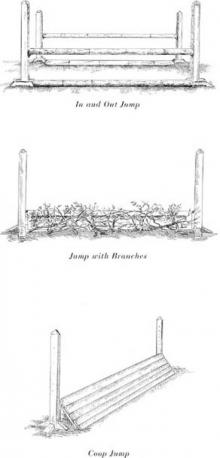 The Georges and the Jewels
The Georges and the Jewels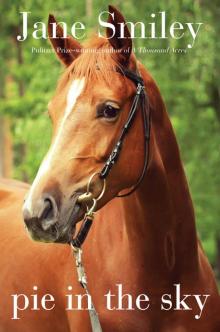 Pie in the Sky: Book Four of the Horses of Oak Valley Ranch
Pie in the Sky: Book Four of the Horses of Oak Valley Ranch Duplicate Keys
Duplicate Keys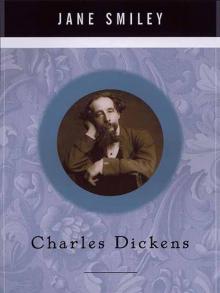 Charles Dickens
Charles Dickens Good Faith
Good Faith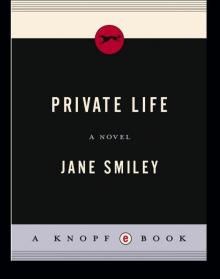 Private Life
Private Life A Thousand Acres: A Novel
A Thousand Acres: A Novel The Greenlanders
The Greenlanders Ten Days in the Hills
Ten Days in the Hills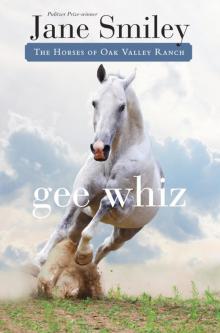 Gee Whiz: Book Five of the Horses of Oak Valley Ranch
Gee Whiz: Book Five of the Horses of Oak Valley Ranch A Thousand Acres
A Thousand Acres The All-True Travels and Adventures of Lidie Newton
The All-True Travels and Adventures of Lidie Newton Ordinary Love and Good Will
Ordinary Love and Good Will Taking the Reins (An Ellen & Ned Book)
Taking the Reins (An Ellen & Ned Book) The Man Who Invented the Computer
The Man Who Invented the Computer Horse Heaven
Horse Heaven The Age of Grief
The Age of Grief Riding Lessons
Riding Lessons Perestroika in Paris
Perestroika in Paris A Good Horse: Book Two of the Horses of Oak Valley Ranch
A Good Horse: Book Two of the Horses of Oak Valley Ranch Saddles & Secrets (An Ellen & Ned Book)
Saddles & Secrets (An Ellen & Ned Book) Some Luck: A Novel
Some Luck: A Novel Champion Horse
Champion Horse Some Luck
Some Luck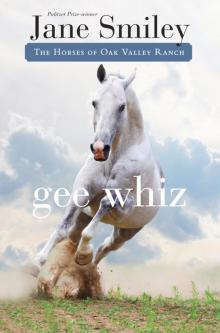 Gee Whiz
Gee Whiz Barn Blind
Barn Blind A Thousand Acres (1992 Pulitzer Prize)
A Thousand Acres (1992 Pulitzer Prize)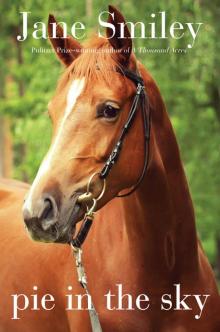 Pie in the Sky
Pie in the Sky True Blue
True Blue A Thousand Acres_A Novel
A Thousand Acres_A Novel A Good Horse
A Good Horse